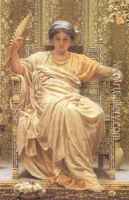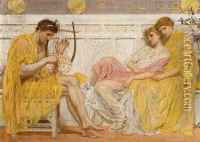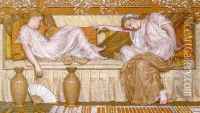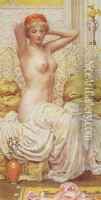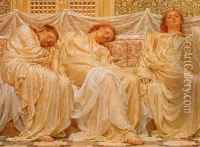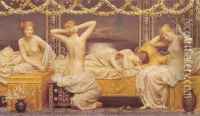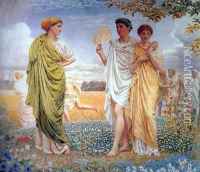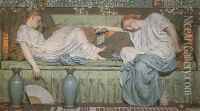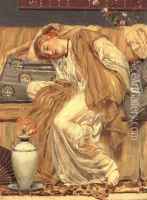Albert Joseph Moore Paintings
Albert Joseph Moore was an English painter, known for his depictions of languid female figures set against the luxury and decadence of the classical world. He was born on September 4, 1841, in York, and was part of an artistic family; his father, William Moore, was a well-known portrait painter and his brother, Henry Moore, became a notable marine artist.
Moore developed his artistic talents at the York School of Design and later at the Royal Academy Schools, where he was influenced by the Pre-Raphaelite Brotherhood and the work of John Ruskin. His early works were characterized by detailed historical and literary themes, but as his career progressed, he became more interested in creating works that emphasized beauty and an idealized aesthetic, rather than narrative content.
In the 1860s, Moore began to produce the works for which he is best known, focusing on classical themes and the female form. These paintings typically feature serene, ethereal women in flowing drapery, often set in dreamlike, classical environments. His use of color was subtle and harmonious, with a restrained palette that contributed to the tranquil and somewhat melancholic atmosphere of his paintings.
Moore's work was well received in his time, with patrons appreciating his art for its decorative quality and its ability to evoke a world of serene beauty, untouched by the industrialization and social change of the Victorian era. He exhibited regularly at the Royal Academy and other venues, and his paintings appealed to collectors who valued art as an expression of refinement and taste.
Despite his success, Moore's work fell out of favor towards the end of his life and after his death, as tastes shifted towards modernism and his style was seen as outdated. Nonetheless, he continued to paint until his health declined. Moore died on September 25, 1893, in London. In recent years, there has been a renewed interest in his work, and he is now recognized for his contribution to the Aesthetic Movement and his influence on the development of abstract and decorative art.
